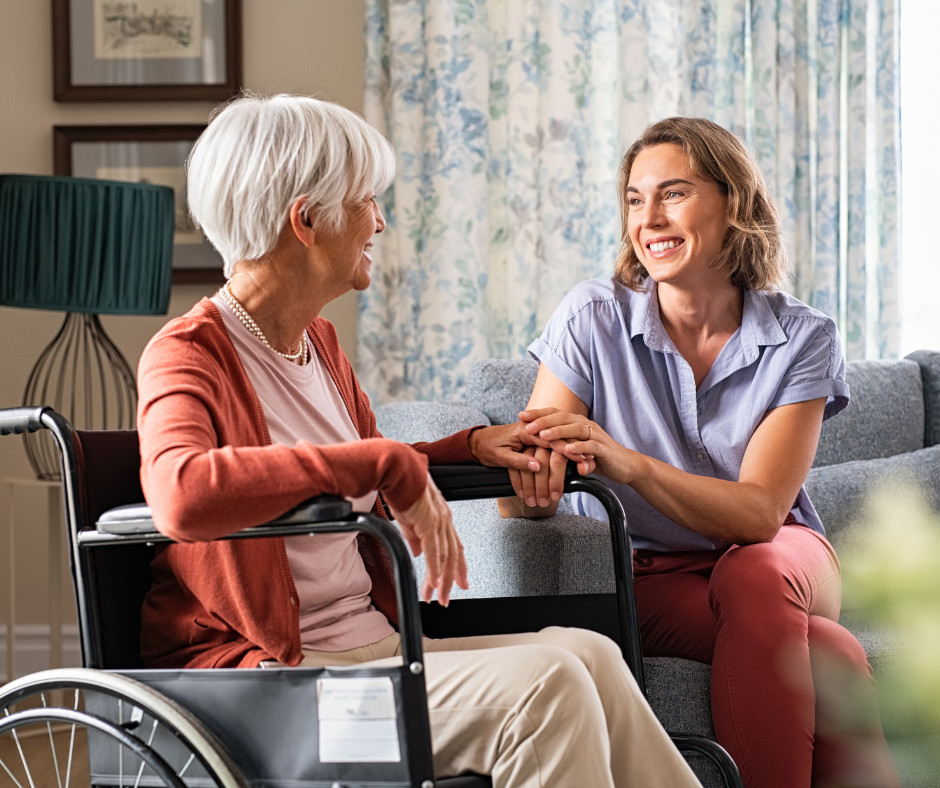
Older Adults: Preparing for Emergencies
Older adults often have unique needs during and after a disaster. This page provides practical guidance to help you identify those needs and take simple, low-cost steps to be better prepared for hurricanes, storms, or other emergencies.
Prepare in Three Easy Steps
The Disaster Preparedness Guide for Older Adults is intended to support older adults and their caregivers in preparing in three easy steps: assess your needs, create a plan and engage your network. The guide provides easy-to-read, user-friendly worksheets that walk individuals and caregivers through a self-assessment to identify specific needs and checklists that create a personalized plan.
Step 1: Know Your Needs
Start by understanding your personal risks and requirements during emergencies. A self-assessment helps identify critical needs such as mobility, medications, and daily support so you can tailor your emergency plan.
Step 2: Build Your Emergency Plan
Create a detailed emergency plan and assemble a preparedness kit designed for your unique situation. This ensures you are ready to respond safely to a range of scenarios, whether sheltering in place or evacuating.
Step 3: Engage Your Support Network
Identify family, friends, caregivers, neighbors, or community members who can assist you during a disaster. Incorporate them into your emergency plan so you have reliable help when you need it most.
Make A Plan
1. Create a support network of family, friends and others who can assist you during an emergency. Make an emergency plan and practice it with them.
2. Make sure at least one person in your support network has an extra key to your home, knows where you keep your emergency supplies, and knows how to use lifesaving equipment or administer medicine.
3. If you undergo routine treatments administered by a clinic or hospital, find out their emergency plans and work with them to identify back-up service providers.
4. Don’t forget your pets or service animals. Not all shelters accept pets, so plan for alternatives. Consider asking loved ones or friends outside of your immediate area if they can help with your animals.
Additional Tips to Get Prepared
- Learn which hazards could affect your area and plan for both evacuation and sheltering in place.
- Stay informed with a NOAA Weather Radio, TV, and local alerts for severe weather.
- Download the FEMA app to receive real-time alerts for multiple locations nationwide.
Protect Your Benefits
A disaster can disrupt mail service for days or weeks. If you depend on Social Security or other regular benefits, switching to electronic payments is a simple, important way to protect yourself financially before disaster strikes. It also eliminates the risk of stolen checks. The U.S. Department of the Treasury recommends two safer ways to get federal benefits:
- Direct Deposit: Have benefits sent directly to your bank account. Sign up by calling 800-333-1795 or online.
- Direct Express® Prepaid Card: A secure, convenient alternative to paper checks for federal benefits.

People with Disabilities: Preparing for Emergencies
Disabilities affect individuals across all ages, backgrounds, and abilities. Effective emergency planning requires understanding each person’s unique needs—both visible and invisible. This guide helps individuals with disabilities and their caregivers plan ahead to stay safe and maintain essential routines during a disaster.
Stay Informed
- Know which hazards could affect your area, when evacuation may be needed, and when to shelter in place.
- Monitor local alerts via NOAA Weather Radio, TV, and mobile warnings.
- Download the FEMA App for real-time weather alerts for multiple locations.
Medication and Health Needs
- Keep an emergency supply of prescription and non-prescription medicines.
- Maintain a list of medications, dosages, and allergies.
- Store medicines requiring refrigeration with coolers or ice packs.
Accessibility and Communication
- Deaf or Hard of Hearing: Weather radios with text/flashing alerts, extra batteries, pen and paper for communication, battery-operated lanterns for visibility.
- Blind or Low Vision: Label supplies with Braille or large print; maintain audio or digital copies of emergency instructions.
- Speech Disabilities: Plan evacuation with assistive devices, keep backup devices and communication cards.
- Intellectual or Developmental Disabilities: Include electronic devices, chargers, comfort items, and noise-reducing tools.
- Mobility Disabilities: Keep spare manual chairs, batteries, mobility aids, and maintain communication with neighbors for support.
- Alzheimer’s and Dementia: Never leave the person alone, bring familiar comfort items, and choose calm, safe areas during evacuation or sheltering.
Additional Essentials
- Multiple days of medications and spare medical supplies
- Extra eyeglasses, contacts, hearing aids, and batteries
- Insurance, Medicare, and medical device information
- Emergency contact list
- Service or support animal supplies, including food, water, and medical records
Disability Resources for Emergencies
Special Need Shelter Registration
To register for a special needs shelter or transportation, complete the program evaluation form by one of the following methods:
- Online registration (preferred registration method)
- Complete an evaluation form and mail or fax to:
Hillsborough County Health Department
P.O. Box 5135
Tampa, FL 33675-5135 - English form*
- Forma española*
- *These are fillable PDF forms and may not open correctly with some browsers, such as Chrome or Firefox. Please download the form, then open it using a PDF reader, such as Adobe Acrobat Reader. Download the Adobe PDF reader for free.
- Call your home health care provider
- Call the Hillsborough County Health Department at (813) 307-8063
The evaluation form requests information about your medical problems and needs; be as detailed as possible so we can evaluate your form accurately for eligibility.
Personal Disaster Preparedness
- I Use a Wheelchair
- I am Hard of Hearing
- I am Blind
- What to Know if You Live with a Disability (:19)
- What to Know if You Live with a Disability (1:14)
Planning ahead ensures that individuals with disabilities can navigate emergencies safely, maintain essential routines, and access support when it matters most.
